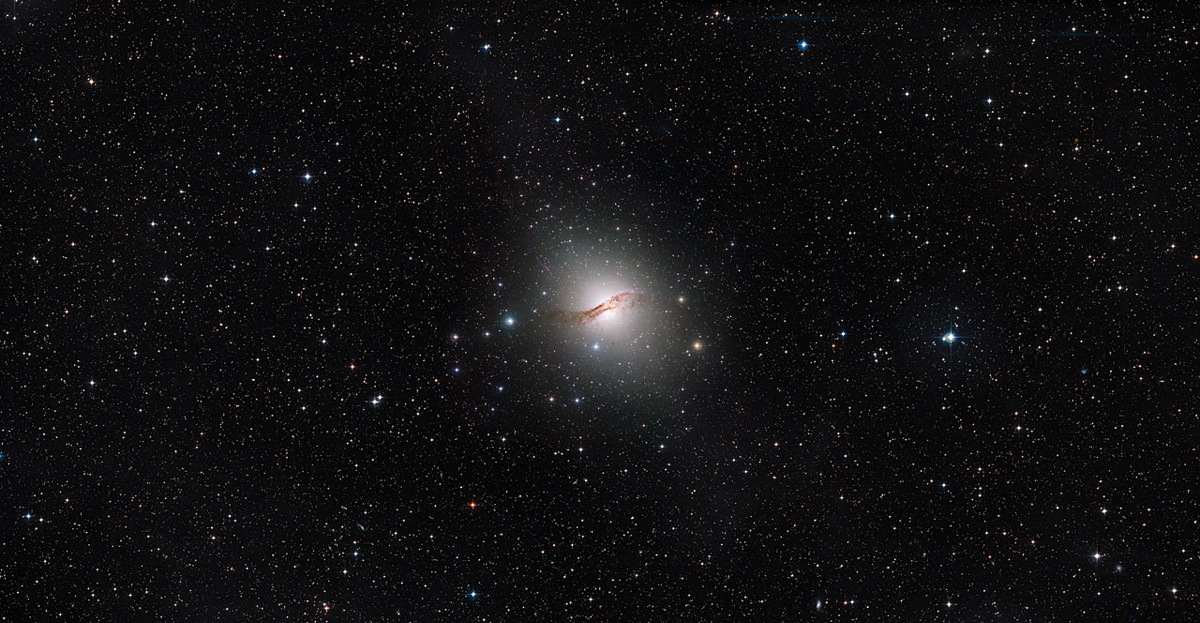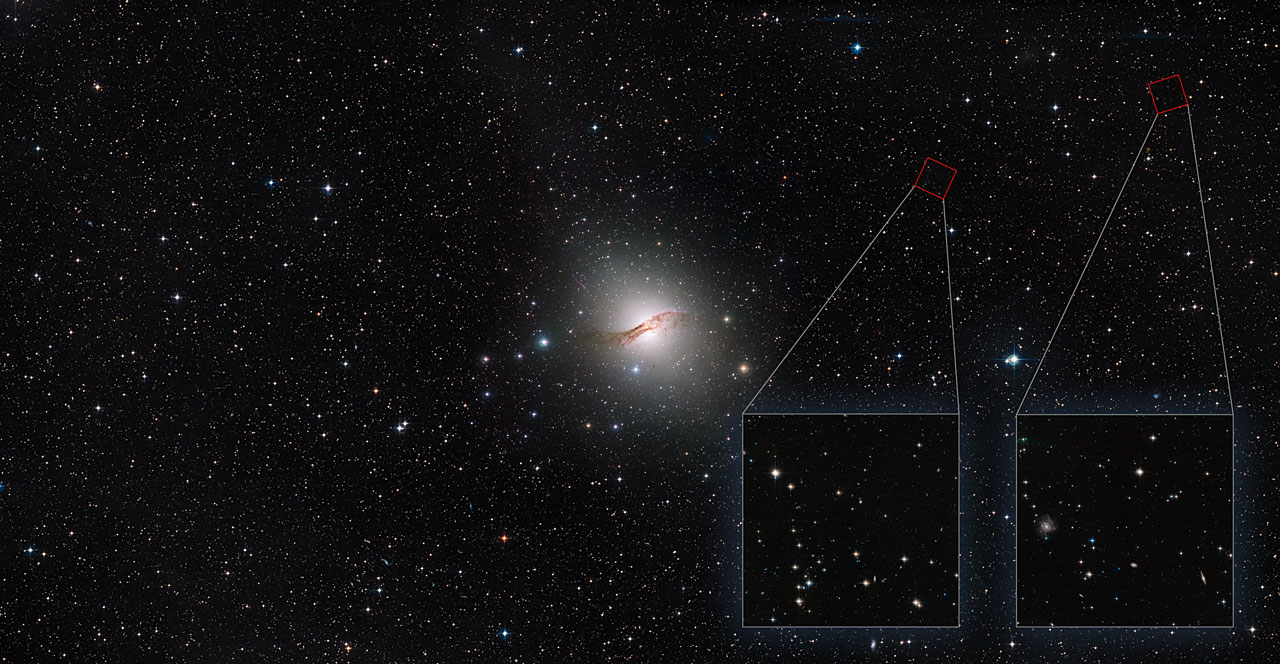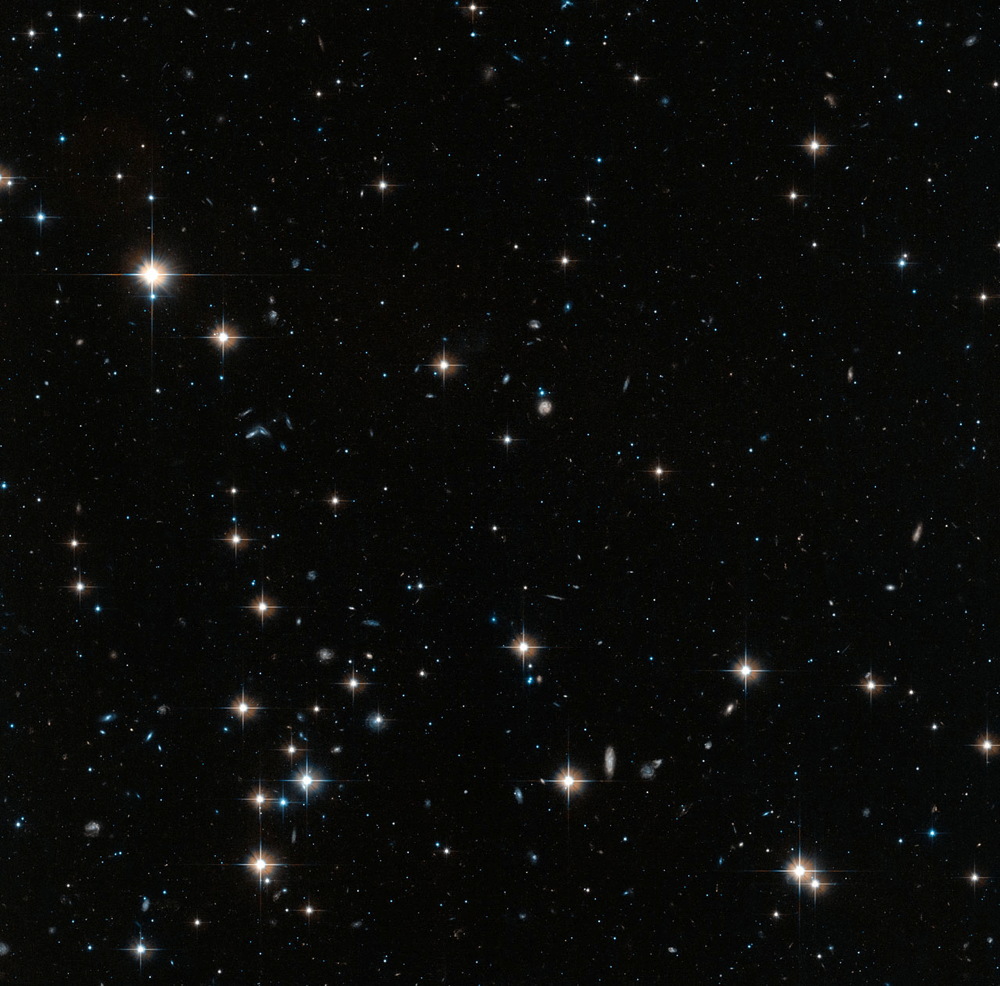Hubble Telescope Spies Off-Kilter Halo Around Distant Galaxy (Images)

The Hubble Space Telescope has captured the best view yet of a halo of stars around the giant elliptical galaxy Centaurus A, only to make a surprising find. The galaxy's outer edge is surprisingly rich in heavy metals, scientists say.
The researcers found that the stars in Centarus A's halo have a higher amount of heavy elements than thought possible for stars at such large distances from their home galaxy's center. The findings also revealed an unexpected lopsided shape to the halo around the Centarus A galaxy.
"The distinctive thing about this study is its tracing of the halo outward to remarkably large radii and faint levels," lead author Marina Rejkuba, of the European Southern Observatory in Germany, told Space.com in an email. [65 Amazing Galaxy Photos]
Heavy-metal halo
Lying a little over 12 million light-years from Earth, the galaxy Centaurus A is the Milky Way's closest giant elliptical galaxy neighbor, making it the easiest to observe. A halo of stars that formed early in the life of the galaxy surrounds Centaurus A, also known as NGC 5128. Such halos are common to all galaxies, but are more well populated and extended in large ellipticals.
Rejkuba and a team of international astronomers used the Advanced Camera for Surveys and the Wide Field Camera 3 on board Hubble to resolve and map individual red giant stars within the halo. The red giants of the galaxy mix in with foreground and background objects that must be weeded out based on their brightness.
"For more-distant galaxies, this would not be possible," Rejkuba said.
In addition, most of the galaxies near the Milky Way are spiral galaxies, with smaller halos that are more difficult to track.
Breaking space news, the latest updates on rocket launches, skywatching events and more!
Using Hubble, the team traced Centaurus A approximately 450,000 light-years along its length and 295,000 light-years along its width. (One light-year is the distance light travels in one year, about 6 trillion miles or 10 trillion kilometers).This amounted to 25 and 16 times the galaxy's effective radius, almost doubling the length of previous studies. This is the most remote portion of an elliptical galaxy ever explored.
To the researchers' surprise, they found that stars in the outer regions of the stellar halo were rich in what astronomers term "metals" — any elements other than hydrogen and helium. The usual process of star formation makes it unlikely that such metals would appear in great numbers in the halo.
Stellar surprises
Because star formation builds off previous generations, hydrogen and helium tend to dominate the first stars in a system. Stars create other elements in their cores, then throw off those elements during explosive supernova deaths. The elements then get mixed into the gas that builds future stars. Creating stars rich in heavy elements, therefore, requires cycling through multiple generations, a process that involves a minimum density of gas commonly lacking in the outer regions of a galaxy.
"It is surprising to find so many heavy elements in stars at large distances where the density of stars — and presumably the density of gas from which they form — is extremely low," Rejkuba said.
The finding suggests that the team has not yet reached the edge of the halo, despite the detailed mapping by the Hubble Space Telescope.
Mergers with a large spiral galaxy could have caused the presence of stars with higher metallicities. The consumed spiral would have ejected stars from its disc to the outer regions of Centaurus A.
The halo also has a slightly lopsided shape, with more stars scattered in one direction than the other. Scientists expect stellar halos to follow a similar profile to the halo of dark matter that surrounds galaxies, because they formed at similar times, but most dark matter halos are thought to be spherical.
Only the dark matter halos around the Milky Way and Andromeda galaxies have been studied at comparable distances, which is not enough data to draw more general conclusions, Rejkuba said.
The team intends to continue mapping the stellar halo surrounding Centaurus A to determine how far it extends and why it has a nonuniform shape.
"We also hope to find more evidence of past accretion events that perhaps contributed to the formation of the halo," Rejkuba said.
The results were published online in the July 22 edition of the Astrophysical Journal Letters.
Follow us @Spacedotcom, Facebook and Google+. Original article on Space.com.

Nola Taylor Tillman is a contributing writer for Space.com. She loves all things space and astronomy-related, and always wants to learn more. She has a Bachelor's degree in English and Astrophysics from Agnes Scott College and served as an intern at Sky & Telescope magazine. She loves to speak to groups on astronomy-related subjects. She lives with her husband in Atlanta, Georgia. Follow her on Bluesky at @astrowriter.social.bluesky


